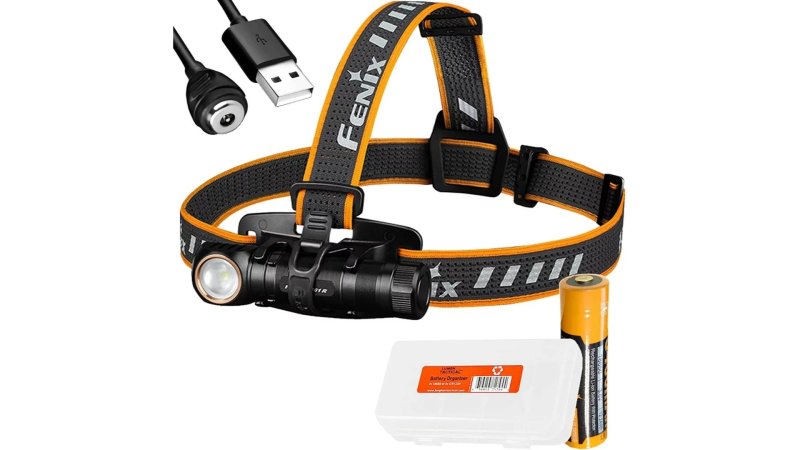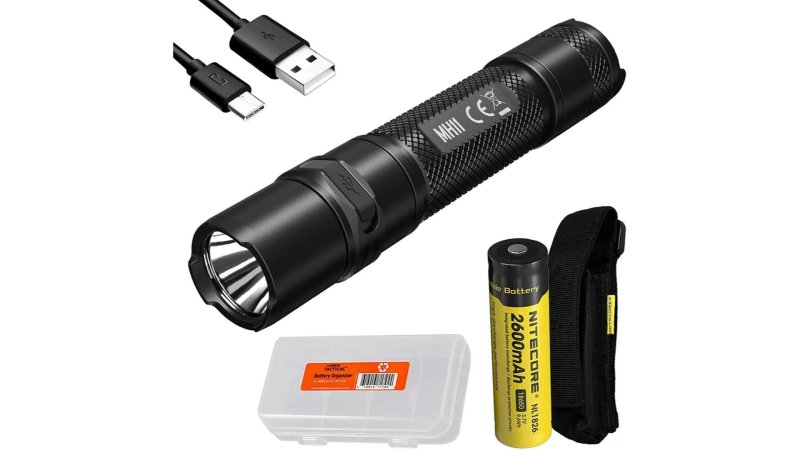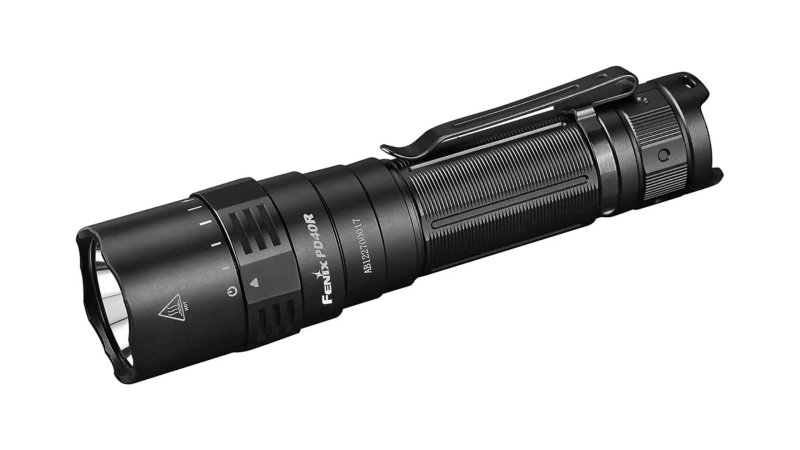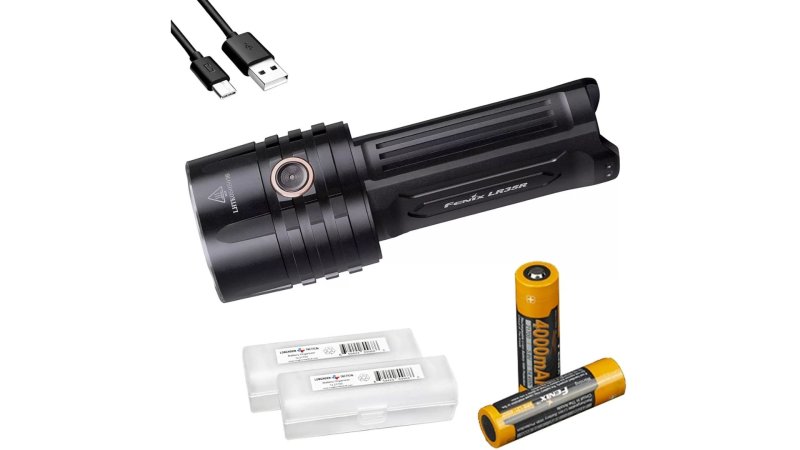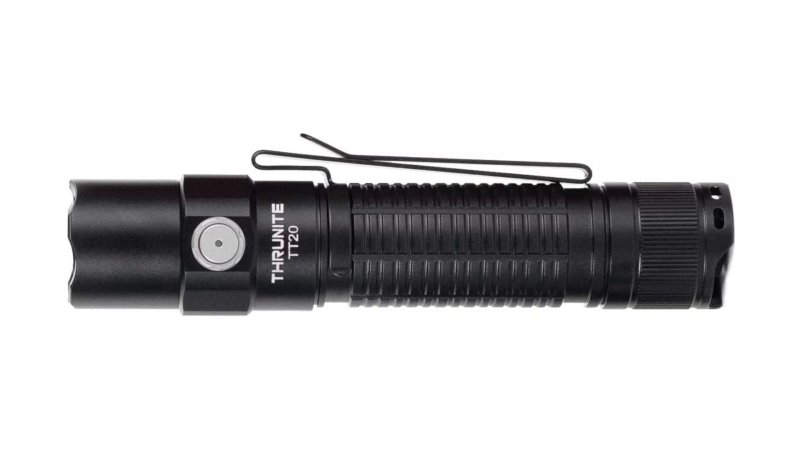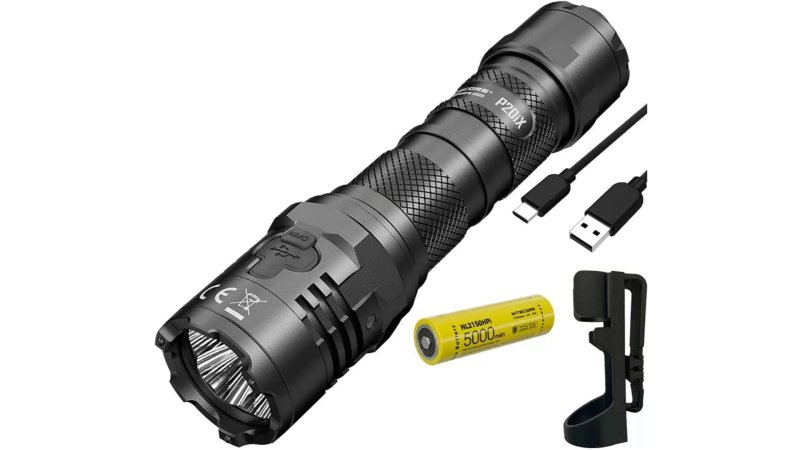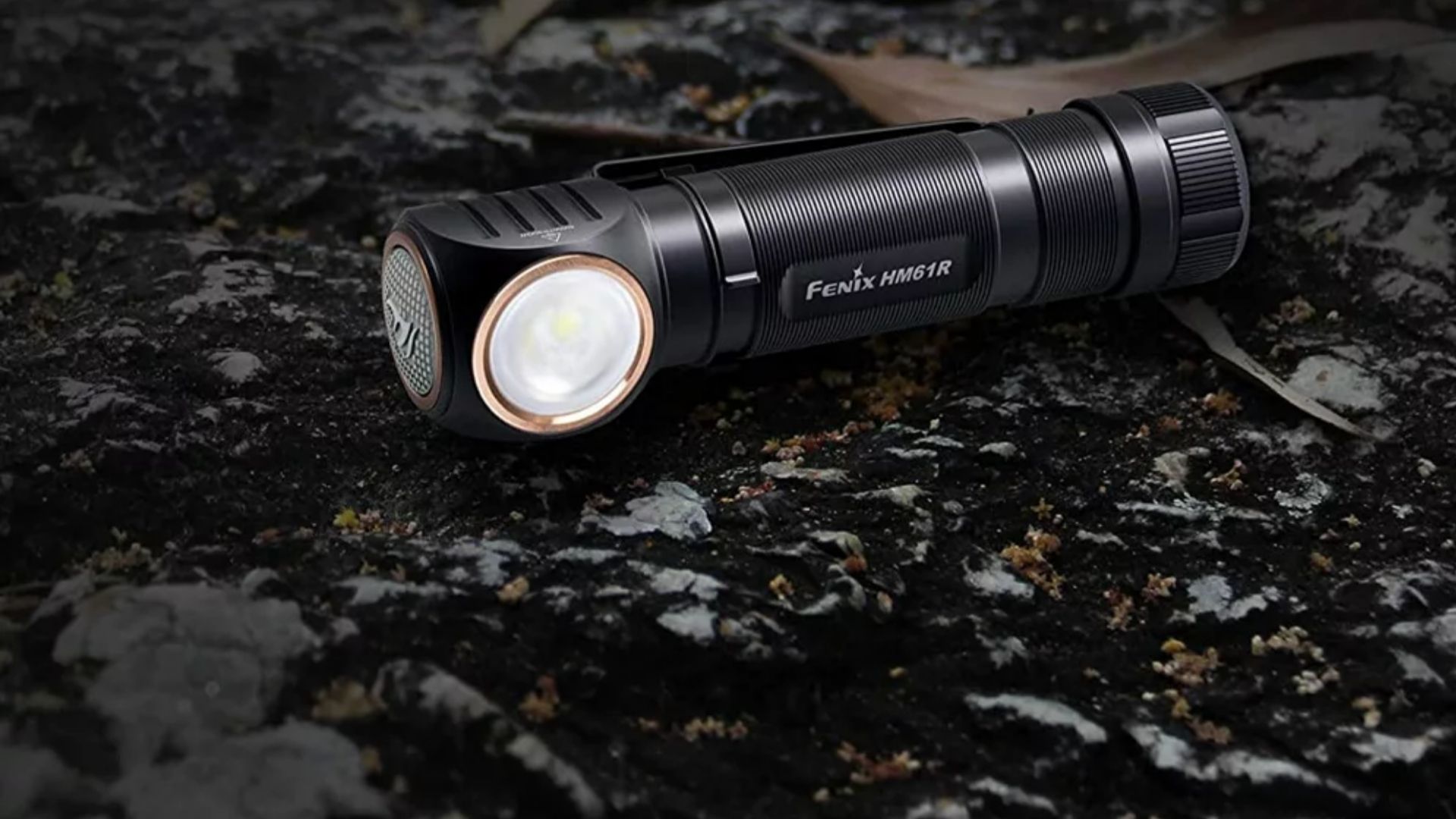

We may earn revenue from the products available on this page and participate in affiliate programs.
In the mountains of northwest Montana, the rains of spring are washing away memories of fresh-powder skiing and days spent snowshoeing under clear blue skies as winter slowly releases its grip on Flathead Valley. While the peaks of the Lewis range will remain crowned with snow for many months, it’s time to begin making plans for summer. The anticipation of days spent camping in the backcountry steadily grows as sunlight lingers a bit longer each passing day.
The seasoned adventurer will make good use of the remaining days of spring to carefully review, maintain, and if appropriate, upgrade their kit to ensure maximum enjoyment in the field. Despite the longer days and warmer nights, a key piece of gear for any camping endeavor is the humble, but essential, flashlight.
In this article, we will cover in depth the best camping flashlights. To facilitate the discussion and narrow the field of possibilities to a more manageable size, we will consider only vehicle-dependent camping scenarios, which presumes that weight is not a major consideration and external power sources are available to some degree.
Methodology
From illuminating things that go bump in the night to telling ghost stories by the fire, the camping flashlight must fulfill many roles. While it may be tempting to buy something inexpensive and expedient at the nearest big box store, we will take a more measured approach, and define five key requirements for the best camping flashlight.
- LED illumination: There is simply no reason to purchase a flashlight with an incandescent bulb anymore. LEDs are brighter, more efficient, and will last thousands of hours longer than any other bulb design.
- Variable output: A light that can produce 1,000, 2,000, or even more lumens at full power is certainly impressive; however, many situations such as reading a good book under the stars or answering the call of nature at 2 a.m. warrant a much lower level of illumination. Accordingly, we will focus on flashlights that provide multiple brightness settings, ideally ones that offer three orders of magnitude in brightness range (e.g., 1,000 lumens to one lumen).
- Field-rechargeable: Non-rechargeable batteries are expensive and environmentally wasteful, and carrying spare batteries takes up unnecessary space. We will focus on flashlights that use Li-ion which can be recharged using a standard USB-A connector. Our vehicle-dependent camping scenario ensures that the flashlight can be recharged via a USB port within the vehicle itself or using a standalone battery pack of the type used to charge smartphones and other mobile devices.
- Rugged construction: Whether rattling around in an empty ammo can or being dropped on granite, camping flashlights can really take a beating. We will focus on lights made from durable materials such as aircraft grade aluminum or rugged polymers.
- Ingress protection (IP): Protection against dust, mud, rain, snow, and the occasional drop in an alpine lake is a key requirement. We’ll stop short of going into dive light territory, but ingress protection is essential.
Satisfying all of these requirements will mean a focus on the higher end of the price range for flashlights, but based on our experience here at Task & Purpose, it is generally preferred to “buy once, cry once” by purchasing a quality product that lasts for many years of vigorous use.
Best Overall
Fenix HM61R
Pros
- Proven, flexible right-angle design
- Both white and red output
- Magnetic recharging port
Cons
- Less runtime than lights with a larger battery
- Low peak beam intensity compared to other lights
Product Specs
- Settings: Turbo, high, medium, low, eco (white) and medium, low, flash (red)
- Brightness (lumens): 1,200 / 400 / 150 / 50 / 5 (white) or 5 / 1 / 1 (red)
- Runtimes (hours): 2 / 4 / 12 / 38 / 400 (white) or 80 / 400 / 160 (red)
- Peak beam intensity (candela): 5287
- Peak beam distance (meters): 145
- Battery: 18650 @ 3400 mAh
- Ingress protection (IP) rating: IP68 (2 meters for 30 minutes)
- Length: 3.98 inches
- Diameter: 1.81 inches
- Weight: 3.51 ounces (w/o battery)
Best Value
Nitecore MH11
Pros
- Excellent performance to value
- Good output range for a variety of tasks
- Multiple battery options
Cons
- Lower-capacity battery
Product Specs
- Settings: Turbo, high, medium, low
- Brightness (lumens): 1,000 / 230 / 50 / 3
- Runtimes (hours): 2.25 / 4.25 / 20.75 / 250
- Peak beam intensity (candela): 9,150
- Peak beam distance (meters): 190
- Battery: 18650 @ 2600 mAh
- Ingress protection (IP) rating: IP68 (2 meters for 30 minutes)
- Length: 5.1 inches
- Diameter: 0.9 inches
- Weight: 2.1 ounces (w/o battery)
Editor’s Choice
Fenix PD40R
Pros
- Outstanding peak beam intensity and distance
- Innovative control ring design
- Operable while wearing gloves
Cons
- Strobe mode easily activated
- No lock-out option
Product Specs
- Settings: Turbo, high, medium, low, strobe
- Brightness (lumens): 3,000 / 1,000 / 350 / 30 / 2,500
- Runtimes (hours): 2.4 / 3.1 / 8.3 / 88.1 / not specified
- Peak beam intensity (candela): 40576
- Peak beam distance (meters): 400
- Battery: 21700 @ 5000 mAh (each)
- Ingress protection (IP) rating: IP68 (2 meters for 30 minutes)
- Length: 5.4 inches
- Diameter: 1.3 inches
- Weight: 4.1 ounces (w/o battery)
Most Powerful
Fenix LR35R
Pros
- Excellent brightness and output range
- Compact form factor
Cons
- Low-power mode is too bright
- Expensive
Product Specs
- Settings: Turbo, high, medium, low, eco, strobe
- Brightness (lumens): 10,000 / 3,000 / 1,200 / 450 / 50 / 10,000
- Runtimes (hours): 1.4 / 1.6 / 3.25 / 8.3 / 80 / not specified
- Peak beam intensity (candela): 63200
- Peak beam distance (meters): 500
- Battery: Two 21700 @ 4000 mAh (each)
- Ingress protection (IP) rating: IP68 (2 meters for 30 minutes)
- Length: 5.5 inches
- Diameter: 2.0 inches
- Weight: 8.4 ounces (w/o battery)
Best Tail Switch
Thrunite TT20
Pros
- Easy access to firefly setting
Cons
- Proprietary battery
- Not rated for dust resistance
Product Specs
- Settings: Turbo, infinity high, infinity low, firefly, strobe
- Brightness (lumens): 2,526 / 1,468 / 31 / 0.54 / 1,294
- Runtimes (hours): 4 / 4 / 90 / 1536 / 6.5
- Peak beam intensity (candela): 16,650
- Peak beam distance (meters): 258
- Battery: 21700 @ 5000 mAh
- Ingress protection (IP) rating: IPX8 (2 meters for 30 minutes)
- Length: 5.35 inches
- Diameter: 1.2 inches
- Weight: 3.5 ounces (w/o battery)
Best Tactical Practical
Nitecore P20iX
Pros
- Dual user profiles for both tactical and traditional use
- Dual tail cap switch allows easy access to all settings
Cons
- Low beam intensity despite 4000 lumen brightness
- No lock-out mode
Product Specs
- Settings: Turbo, higher, high, mid, low, ultralow, strobe
- Brightness (lumens): 4,000 / 1,700 / 850 / 300 / 50 / 2 / 4,000
- Runtimes (hours): 0.5 / 2 / 2.5 / 7.25 / 38 / 350 / not specified
- Peak beam intensity (candela): 12200
- Peak beam distance (meters): 220
- Battery: 21700 @ 5000 mAh (each)
- Ingress protection (IP) rating: IP68 (2 meters for 30 minutes)
- Length: 5.57 inches
- Diameter: 1.25 inches
- Weight: 4.1 ounces (w/o battery)
Our verdict on camping flashlights
While many of us at Task & Purpose have fond memories of camping with just a plastic D-cell flashlight from K-mart, it’s safe to say that flashlight technology has advanced significantly since those halcyon days of yesteryear. Efficient LED emitters, computer-designed reflectors, and high-capacity batteries have created a revolution in lighting technology. Our top three picks, the Fenix HM61R, Nitecore MH11, and Fenix PD40R represent the most versatile, best value, and editor’s choice, respectively, and cover a multitude of use cases.
The Fenix HM61R was selected for extreme versatility in both methods of use and modes of illumination. The author uses a light of similar design in nearly all outdoor pursuits for this very reason.
The Nitecore MH11 is a solid, middle-of-the-road contender for budget-conscious buyers at roughly half the price of all the other lights that we reviewed.
The Fenix PD40R won our editor’s choice selection for design efficiency both in terms of ease of operation and the performance of the LED, reflector, lens, and power regulator, which combined, convert 3,000 lumens of potential brightness to a peak beam intensity of over 40,000 candela, the second highest rating of all the lights that we reviewed. For more details on this, please refer to the section on luminous flux versus luminous intensity below.
As always, we welcome feedback from each of you, our valued readers and fellow outdoor enthusiasts. Please leave a comment below to share your thoughts with us.
What to consider when buying a camping flashlight
In addition to the requirements outlined above, it’s important to keep the following factors in mind when selecting a camping flashlight.
Luminous flux vs luminous intensity
Most flashlights are marketed based on their advertised brightness in lumens; however, this is misleading, usually intentionally. A lumen is the International System of Units (SI unit) for luminous flux, which is a measure of the total amount of light radiated by a source, but without consideration for angle or distance.
Consider a point isotropic light source like a candle radiating “x” lumens in all directions. If we place that same candle in front of an ideal reflector, then the brightness of the light perceived by a target in front of the reflector will be considerably higher than before. This characteristic is called luminous intensity, informally called peak beam intensity by manufacturers, and is measured in candela.
Luminous flux is a characteristic of the source (an LED in the case of camping flashlights) while the ability to convert the light into a focused beam — the luminous intensity — is a function of the reflector design, lens efficiency, and other parameters such as the user’s preference for flood versus spot output.
The table below shows the luminous flux (aka brightness) and luminous intensity (aka peak beam intensity) for all of the lights we reviewed. In the case of the Nitecore P20iX, even though the LED produces 4,000 lumens of output, the target perceives only 12,200 candela, and the light can only illuminate objects 200 meters distant. In contrast, the Fenix PD40R generates only 3,000 lumens of output but is capable of converting that raw light into 40,576 candela, a 230 percent increase with 25 percent less power.
| HM61R | MH11 | LR35R | PD40R | TT20 | P20iX | |
| Brightness (lumens)1 | 1200 | 1000 | 10000 | 3000 | 2526 | 4000 |
| Peak Beam Intensity (cd) | 5287 | 9150 | 63200 | 40576 | 16650 | 12200 |
| Peak Beam Distance (m) | 145 | 190 | 500 | 400 | 258 | 200 |
| Note: The manufacturer’s term “brightness” is more correctly labeled luminous flux |
Thermal protection
All of the flashlights we reviewed employ a thermal protection circuit to prevent damage to the LED due to overheating. This is generally a consideration at the higher brightness setting, although prolonged use at medium levels can also activate the circuit. In all cases, the maximum brightness values for each light are specified before the thermal protection circuit begins to ramp down the light output. This generally occurs within 30 seconds to a few minutes depending on the power output, power regulator, and radiator efficiency. The ramp-down curve of the thermal protection circuit for each light can usually be found in the user manual for each light.
Recharging options
All of the lights we reviewed use either a USB-C port or a sealed magnetic port (as in the case of the Fenix HM61R) for charging. We intentionally excluded flashlights that have legacy USB micro connectors due to the likely near-term obsolescence of these connectors and their slower recharge rates.
Camping flashlight pricing
As with many gear choices, you get what you pay for when it comes to selecting a camping flashlight. That said, due to the rate of change in technology, the budget flashlights of today often have many of the flagship features of just five years ago.
Budget
A quality camping flashlight in this category like the Nitecore MH11 will generally run around $50 at the time of writing. At that price point, buyers can expect to receive an older-generation LED with a brightness of around 1,000 lumens powered by an 18,650 Li-ion battery of 2,500 to 3,500 mAh of capacity. There is generally little correlation between the number of brightness settings and price with all lights offering some form of high-output “turbo” and between two and four dimmer options.
Mid-range
Flashlights in this category will generally feature either flexible form factors and user options like the Fenix HM61R and/or brighter LED’s, better reflectors, and larger 21700 series batteries with longer runtimes. The Fenix PD40R V2.0 is a good example in this category with 3,000 lumens of brightness and a peak beam distance of 400 meters. These lights will generally cost around $100.
Premium
A premium-grade flashlight is generally defined by dramatically higher brightness owing to multiple or improved LEDs with superior reflector designs and multiple 21700 series batteries. The Fenix LR35R with 10,000 lumens of brightness and a peak beam distance of 500 meters is representative of the premium level in camping flashlights. These lights will generally cost upwards of $200. Even though this article is written for vehicle-dependent camping, it’s worth noting that some users may find the size of such flashlights unwieldy depending on the overall form factor chosen by the designers.
How we choose our top picks
Our selections for this article are based on field experience with comparable products along with extensive research including reviews of manufacturer specifications, professional publications, product videos, and other sources.
FAQs on camping flashlights
Q: Why do you need a flashlight for camping?
A: There are a variety of reasons including night hiking, setting up camp, cooking, searching for gear in the dark, and, of course, the ever-popular snipe hunt.
Q: How many lumens do I need for a camping flashlight?
A: While lumens do not directly correlate to peak beam intensity, we recommend at least 1,000 lumens for a camping flashlight.
Q: How far will 1,000 lumens shine?
A: Lumens do not directly correlate to peak beam intensity; therefore, we recommend looking at the peak beam distance rating for each light and selecting one that can illuminate objects at least 100 meters away.
Q: Why didn’t you review ____ brand?
A: As part of our review process, we carefully reviewed product recalls and safety issues from each manufacturer. Any manufacturers with recent quality issues, especially those related to the thermal protection circuit, were excluded from consideration.
